Japanese gardens are renowned for their exquisite beauty, tranquility, and meticulous design. Central to the creation and maintenance of these serene landscapes are the tools used by skilled gardeners. In this article, we’ll delve into the world of the most popular Japanese gardening tools, each possessing a unique purpose and significance in the art of gardening.
Table of Contents
Introduction to Popular Japanese Gardening Tools
In Japanese gardening, the choice of tools is not merely a practical consideration but an integral aspect of cultivating the serene beauty and equilibrium inherent in these outdoor spaces. Traditional Japanese gardening tools are meticulously crafted to align with the principles of precision and simplicity, reflecting the artistry ingrained in this ancient practice. The subtle curvature of a pruner’s blade or the ergonomic design of a rake is thoughtfully considered to ensure not only efficient gardening but also a seamless integration with the overall aesthetic of the garden.
Each tool becomes an extension of the gardener’s intent, facilitating a connection between humans and nature that is central to Japanese gardening philosophy. In the hands of a skilled practitioner, these tools transcend mere implements, becoming conduits for the expression of artistry and the realization of tranquility within meticulously designed landscapes.
Read also: Simple and Easy Japanese Living Room Ideas
1. Hori-Hori Knife: A Gardener’s Swiss Army Knife
The Hori-Hori knife, often referred to as a gardener’s Swiss Army knife, is a versatile tool that serves multiple functions. Its name, derived from the Japanese words “hori” (to dig) and “hori” (to cut), perfectly encapsulates its primary uses—digging and cutting. With a sharp, serrated edge on one side and a straight edge on the other, the Hori-Hori knife is indispensable for various gardening tasks.

In Japanese gardens, where precision and attention to detail are paramount, the Hori-Hori knife shines. Whether it’s planting delicate flowers, digging small holes for seedlings, or cutting through stubborn roots, this tool effortlessly combines functionality with durability.
2. Bonsai Tools: Crafting Miniature Masterpieces
Bonsai, the art of cultivating miniature trees, demands meticulous care and attention. This extends to the tools used in shaping these tiny masterpieces. Bonsai tools include various specialized instruments such as pruning shears, concave cutters, wire cutters, and knob cutters.
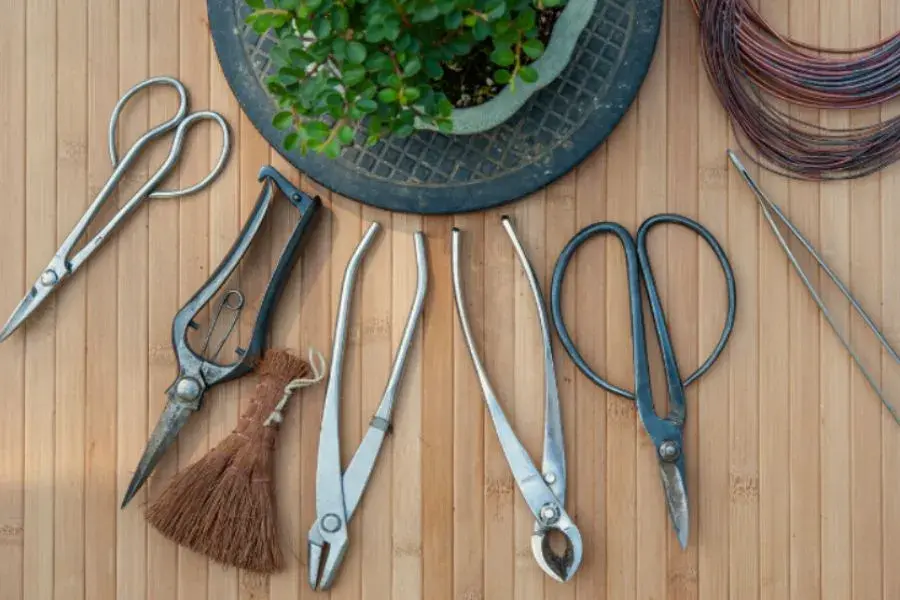
Pruning is a fundamental aspect of bonsai care, and each tool serves a specific purpose. Pruning shears are used for general trimming, while concave cutters help in making clean, concave cuts to promote healing. Wire cutters, as the name suggests, are essential for shaping the branches with wire, and knob cutters assist in removing unwanted knobs without leaving visible scars.
3. Pruning Shears: Precision in Every Cut
Japanese pruning shears, also known as secateurs, come in various types, each tailored for specific pruning tasks. Bypass pruners are commonly used for clean cuts on live branches, while anvil pruners are suitable for cutting dead wood.

Proper pruning techniques are crucial for the health and aesthetics of plants. When using pruning shears, it’s essential to make clean cuts at a 45-degree angle to promote healing and reduce the risk of diseases. Regular pruning encourages healthy growth, enhances flowering, and maintains the overall shape of plants.
4. Japanese Hand Hoe: Tackling Weeds with Ease
Weeding is a constant battle in any garden, and the Japanese hand hoe, or Nejiri Kama, is designed to make this task more manageable. With its triangular-shaped blade, this hand-held hoe excels in precision weeding and cultivating soil in tight spaces.
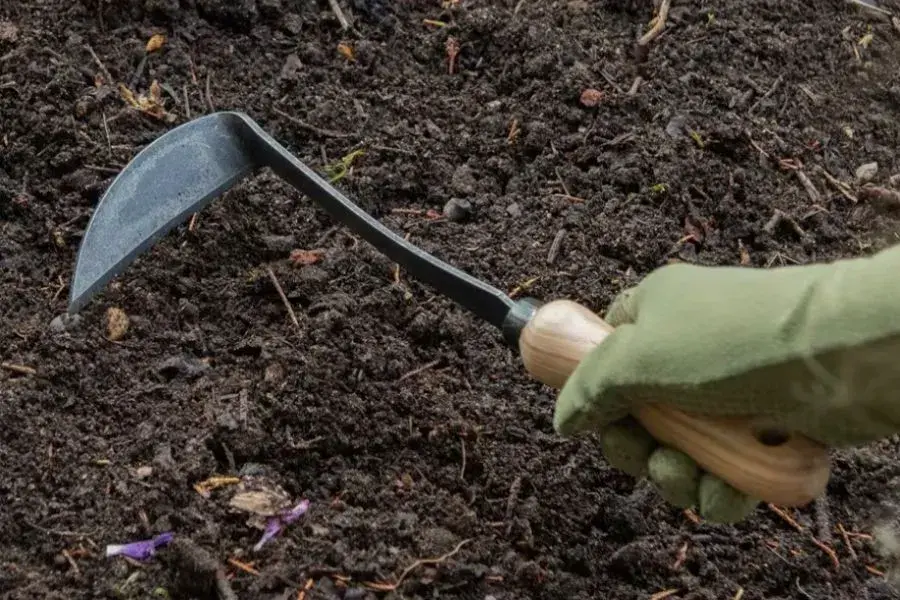
The Nejiri Kama’s design allows gardeners to reach between plants, removing weeds without disturbing the surrounding soil. Its versatility makes it an indispensable tool for maintaining the neat and orderly appearance characteristic of Japanese gardens.
5. Japanese Garden Saw: Cutting through Challenges
Pruning and shaping larger plants and trees require a different set of tools, and Japanese garden saws are up to the task. There are various types of saws, including folding saws, pole saws, and crosscut saws, each designed for specific cutting needs.
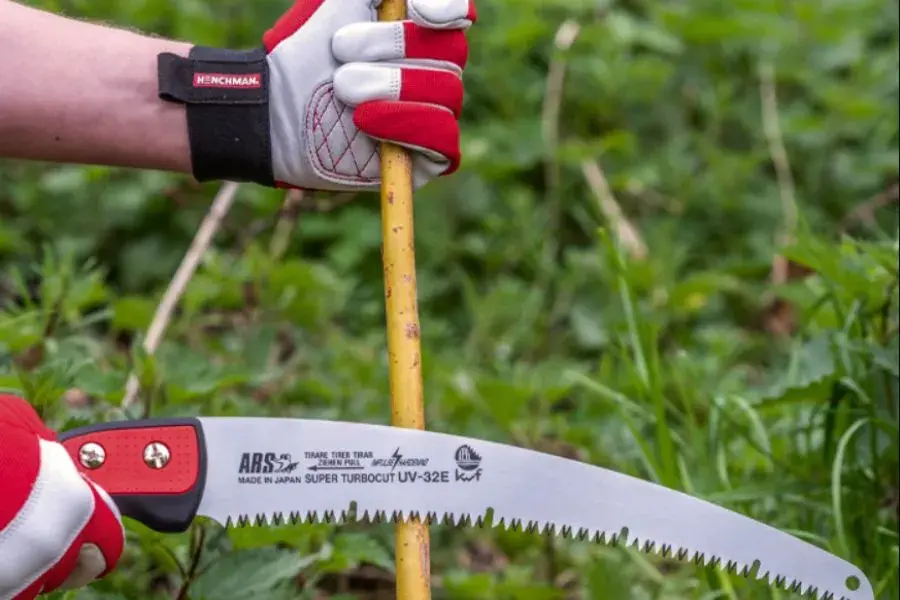
Using the correct saw for the job is essential for both efficiency and safety. Regular maintenance, including cleaning and sharpening the saw, ensures optimal performance. Japanese garden saws are known for their precision, allowing gardeners to make accurate cuts without causing unnecessary damage to the plants.
6. Japanese Grass Sickle: Clearing the Path
For clearing tall grass, weeds, and light brush, the Japanese grass sickle, or Kama, is the tool of choice. With its curved blade and serrated edges, it offers an effective solution for maintaining paths and open spaces in the garden.
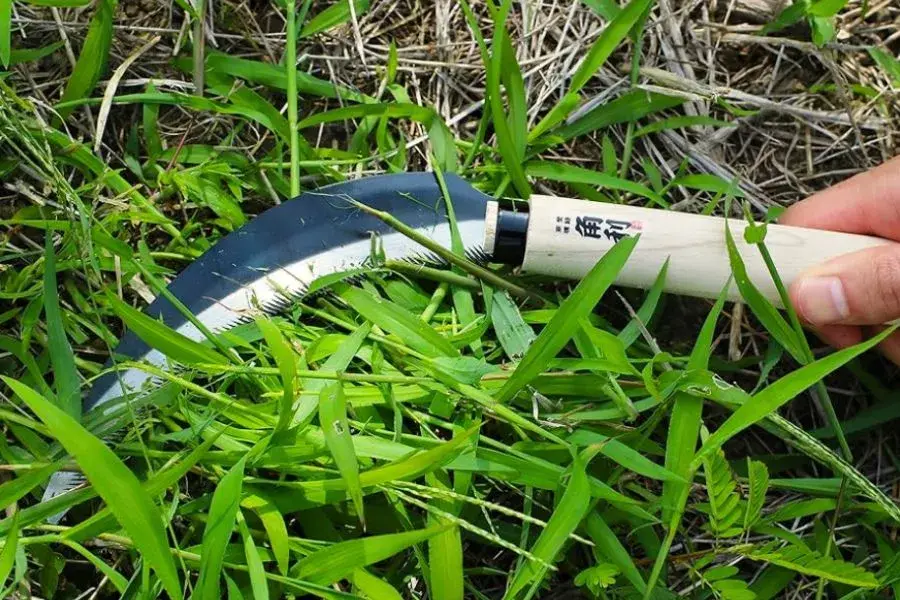
The Kama’s design enables gardeners to clear areas quickly and efficiently. Its curved blade allows for precise cutting, and the serrated edges ensure that even tougher vegetation is easily handled. This tool is particularly useful in creating defined pathways and open areas within the garden.
7. Soil Scoop: Shaping the Earth
When it comes to shaping and leveling soil, the soil scoop, or Sudate, is a handy tool. Resembling a small rake or scoop, allows gardeners to move and shape soil with ease.
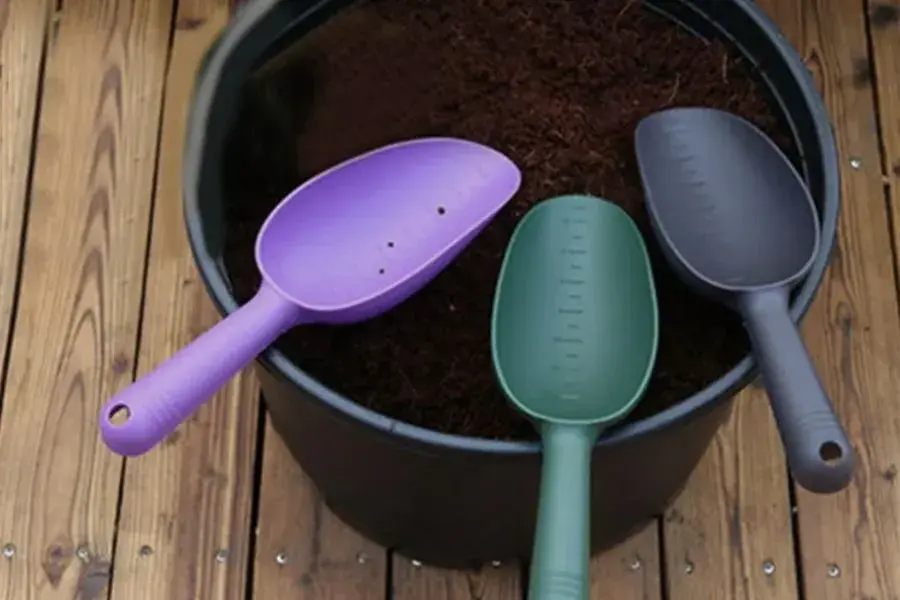
Whether it’s preparing a planting bed or leveling the ground for a new feature in the garden, the Sudate offers precise control. Its compact size makes it suitable for detailed work, ensuring that the soil is shaped according to the gardener’s vision.
8. Bamboo Rake: Gentle Garden Grooming
The bamboo rake, or Kumade, is a gentle yet effective tool for grooming the garden. Made from bamboo, it is lightweight and ideal for raking leaves and debris in smaller garden areas.
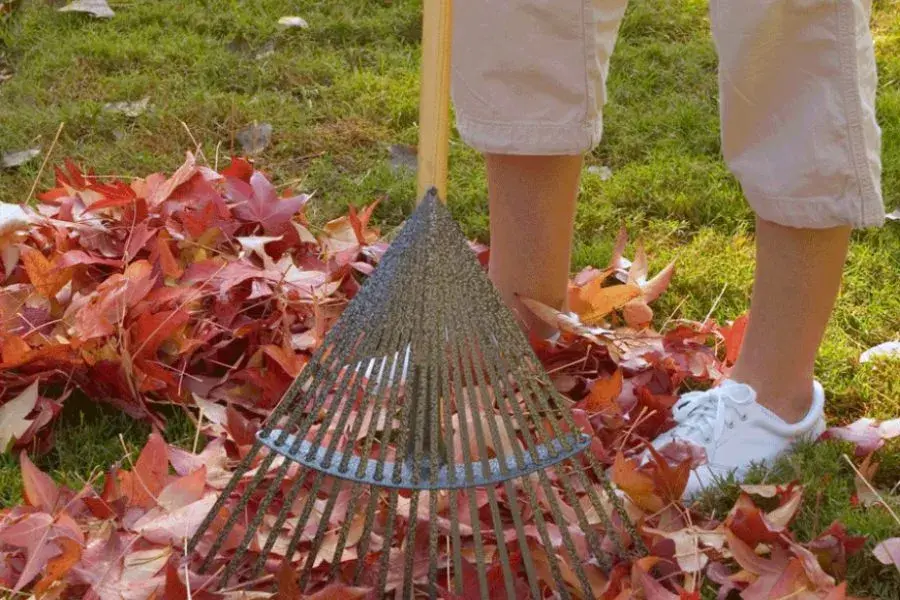
While larger rakes may be too cumbersome for delicate tasks, the Kumade’s design allows for precise grooming. Raking leaves and debris becomes a breeze, and its use extends to the meticulous care required in traditional Japanese tea gardens.
9. Watering Can: Nurturing Plants with Elegance
Watering is a fundamental aspect of gardening, and the Japanese have elevated it to an art form with their traditional watering cans. Often made from materials like copper or brass, these cans add an elegant touch to the nurturing process.
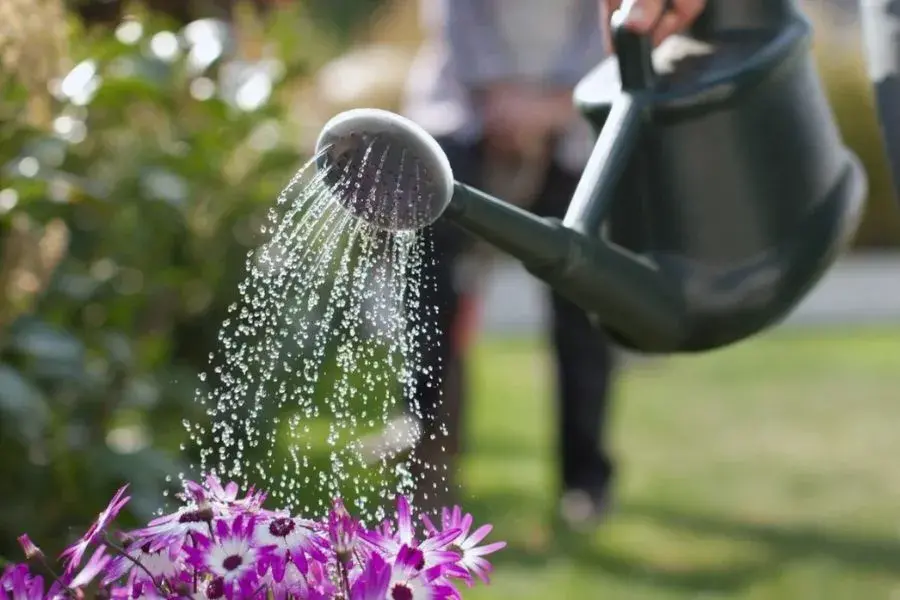
In bonsai cultivation and traditional Japanese gardens, where every drop of water matters, precision is key. The design of traditional watering cans allows for controlled and targeted watering, ensuring that each plant receives the right amount of moisture.
10. Garden Scissors: Precision Cutting for Flourishing Plants
Garden scissors, or Hasami, are an essential tool for precision cutting in the garden. With longer blades than traditional pruning shears, they are designed for detailed and accurate trimming.
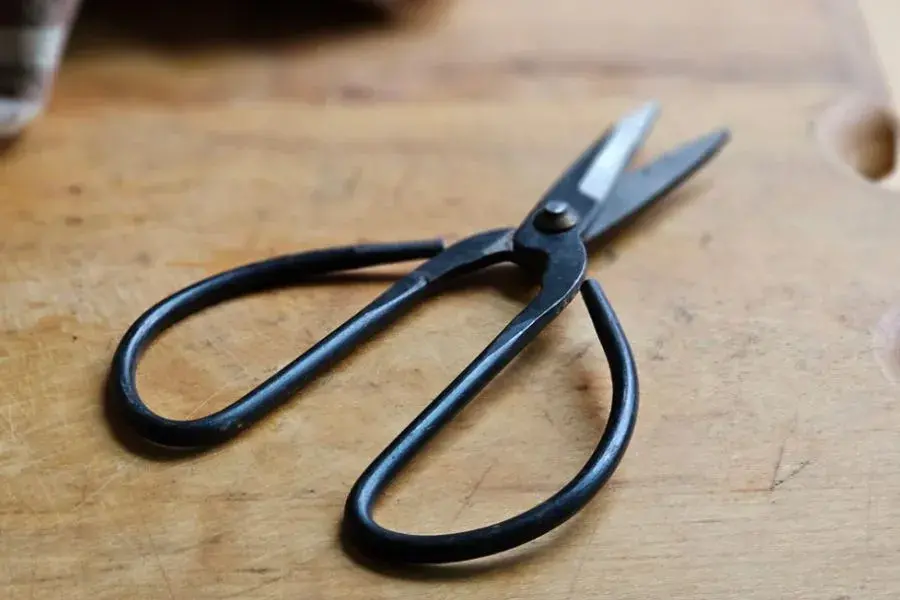
From deadheading flowers to shaping intricate topiaries, Hasami provides gardeners with the precision needed for flourishing plants. Its longer blades offer greater control, making it suitable for fine-tuning the appearance of various plant species.
Combining Traditional and Modern
While traditional Japanese gardening tools have an undeniable charm and effectiveness, combining them with modern tools can result in the perfect gardening toolkit. From ergonomic designs to innovative materials, modern tools can complement the strengths of their traditional counterparts.
Selecting the right tools for the job, whether traditional or modern, is essential for creating an efficient and effective gardening toolkit. From digging to pruning to shaping, having a well-rounded set of tools ensures that every aspect of garden care is covered.
Caring for Your Japanese Gardening Tools
Proper maintenance is crucial for prolonging the life of your Japanese gardening tools. Cleaning, sharpening, and storing them correctly are essential practices that prevent rust and maintain optimal performance.
Different tools may require specific care. For example, oiling the Hori-Hori knife’s blade helps prevent rust, while regularly cleaning the teeth of a Japanese garden saw ensures smooth cutting. Understanding the unique needs of each tool is key to keeping them in top condition.
Where to Find Authentic Japanese Gardening Tools?
Authenticity is paramount when it comes to Japanese gardening tools. While there are numerous online sources, including specialized gardening stores and marketplaces, exploring brick-and-mortar stores that specialize in Japanese tools can also be rewarding.
To ensure you’re getting authentic Japanese gardening tools, look for reputable sellers, check customer reviews, and if possible, inspect the tools in person before purchasing. Authentic tools not only offer superior quality but also a connection to the rich tradition of Japanese gardening.
FAQs about Japanese Gardening Tools
1. Are Japanese Gardening Tools Suitable for All Types of Gardens?
Yes, Japanese gardening tools are versatile and adaptable to various garden settings. Whether you have a small urban garden, a traditional Japanese garden, or a more expansive landscape, these tools can be customized to suit your specific needs.
2. How Often Should I Clean and Sharpen My Gardening Tools?
Regular maintenance is crucial for the longevity and effectiveness of your tools. After each use, it’s recommended to clean off any debris and, if applicable, oil the metal parts. Additionally, sharpening should be done as needed, ideally after every few uses, to ensure clean and precise cuts.
3. What is the Significance of Traditional Materials Like Bamboo in Japanese Gardening Tools?
Traditional materials like bamboo carry cultural and aesthetic significance in Japanese gardening. Bamboo is lightweight, eco-friendly, and reflects the sustainable ethos often associated with Japanese craftsmanship. It adds a touch of authenticity and connects modern gardeners to the historical roots of their tools.
4. Can I Replace Traditional Tools with Modern Ones in a Japanese Garden?
While modern tools offer efficiency and convenience, the essence of a Japanese garden lies in its harmonious blend of tradition and nature. It’s advisable to use a combination of both traditional and modern tools, ensuring that you honor the cultural heritage while benefiting from contemporary innovations for optimal garden care.
5. How Can I Ensure the Authenticity of Japanese Gardening Tools When Purchasing Online?
To ensure the authenticity of Japanese gardening tools when buying online, consider purchasing from reputable sellers or specialized stores. Read customer reviews, look for detailed product descriptions, and, if possible, contact the seller with any specific questions. Authentic tools often come with distinct craftsmanship and markings that reputable sellers can verify.
Conclusion
In conclusion, the world of Japanese gardening tools is a fascinating blend of tradition and functionality. From the multi-purpose Hori-Hori knife to the delicate precision of bonsai tools, each instrument plays a vital role in cultivating beauty and balance. As you embark on your gardening journey, consider investing in these tools to enhance your experience and create a garden that reflects the serene elegance of Japanese landscapes.